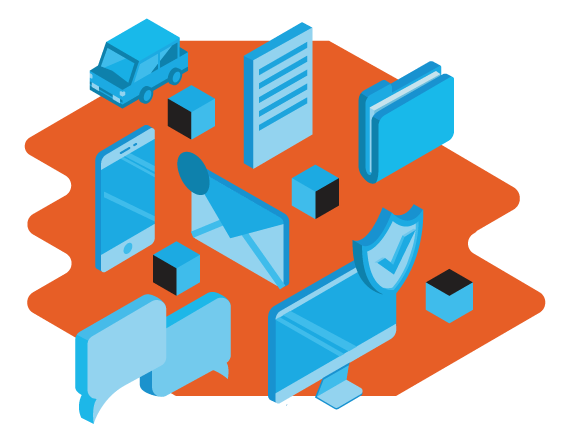Create a Construction Safety Program in 5 Steps
Construction workers make up a small percentage of the total workforce—however, construction workers are injured on the job and even lose their lives more often than any other worker.
There are a few ways to enhance workspace safety, from management leadership to hazardous prevention and control. A safety program can improve production and quality, employee morale, recruiting and retention, and a better image and reputation in the community and beyond. Using OSHA guidance, we have compiled a list of ways, including practical steps you can implement to reduce injuries in the workplace.
1. Management Leadership
As a construction owner, manager, or supervisor, you should prioritize making worker safety a core value by committing to eliminating any continuous hazards to protect your workers by improving safety and health on the job site and providing the necessary tools and resources to implement security and communications. In addition, have a written policy signed by management as a pledge to establish safety. Communicate your safety policy to workers, contractors, staffing agencies, suppliers, and other parties involved at the right time and place.
Reinforce your commitment to safety in all decisions, including bidding on projects, subcontractors and vendors, scheduling, and safety designs. Set an example by following all of your workers’ health and safety procedures. Conduct weekly talks on safety and health and conduct a “to do” list. Define and establish measurable goals and plans to improve safety and health by setting timeframes and resources. You can allocate resources with a good estimate and budget processes. Lastly, choose an experienced frontline person who can help lead the safety program, make plans, track progress, and communicate freely with all workers.
2. Worker Participation
To be effective in your safety and health program, you need worker participation! Encourage workers to participate in the program by giving them time, resources, and space to report safety and health concerns, and utilizing resources such as Safety Data Sheets, incident investigation reports, job site equipment reports investigations, and job hazard and chemical reports. Remove barriers to participation and involve all of your workers in every aspect of the program
3. Hazard Identification & Assessment
Changes in project timelines can cause unanticipated hazards caused by a fast-paced work environment. Identifying risk and assessing it is a crucial part of any program! Start by collecting any information that already exists about your job site hazards. Collect and review this information with your workers, discuss the threats involving equipment, machinery, chemicals, and other types of exposure, and ask workers to report any previous injuries or illnesses. Provide workers with all tools and information such as federal websites, labor unions, and health consultants. Next, make sure to inspect the job site for any safety hazards. Include workers and regular inspections of the job site, document every assessment, including all activities such as excavations, staging areas, and more. Don’t forget to inspect both mobile construction equipment and vehicles regularly.
Identify chemical, physical, animal, and temperature health hazards that may result in harmful skin and respiratory exposure. This includes noise, temperatures, radiation, biohazards, infectious diseases, mold, animal materials, etc. Conduct incident investigations as soon as an incident occurs and identify hazards associated with emergency and non-routine situations. Lastly, characterize the nature of identified threats, interim control measures, and prioritize hazards.

4. Hazard Prevention & Control
Adequate controls and prevention help avoid injuries, illnesses, incidents, and health risk conditions. Identify and select control options by reviewing the OSHA standards and guidance. By controlling hazards, you can prevent death or severe harm. Avoid choosing controls that may bring new dangers. Additionally, develop and update new hazard control plans and implement the selected controls on the job site. A follow-up to confirm that controls are effective and track the progress.
5. Education & Training
Education and training tools are crucial in informing workers and managers about hazards and controls to be safer and more productive. It provides everyone with the knowledge to contribute to its development and implementation. Provide program awareness training to all parties. Knowledge includes the program itself, reporting various hazards or events, what to do in an emergency, and workers’ rights.
The training of employers, managers, supervisors, and workers is an integral part of a successful hazard and health program. It is important to train workers on hazard identification and controls to recognize hazards effectively, perform their job better, and know what to do in case of any event.
Safety standards cannot be ignored! You should strive to train all parties involved to follow the rules set to keep everyone safe. When the safety program is followed, the risks of injury, death, re-doing a job, and other costly aspects are less frequent. Our construction risks specialists at Fulcro are here to assist you in creating an effective risk management strategy and additional safety tips and training to protect all your workers and people involved.
Our Construction Risks Practice consists of some of the most experienced professionals in construction insurance today. Whether you’re a contractor, supplier, engineer, or developer, our insurance specialists are here to help you manage your project’s unique risks to design a specialized and effective insurance program.
___
Source: Applied Systems Inc., 2020.

